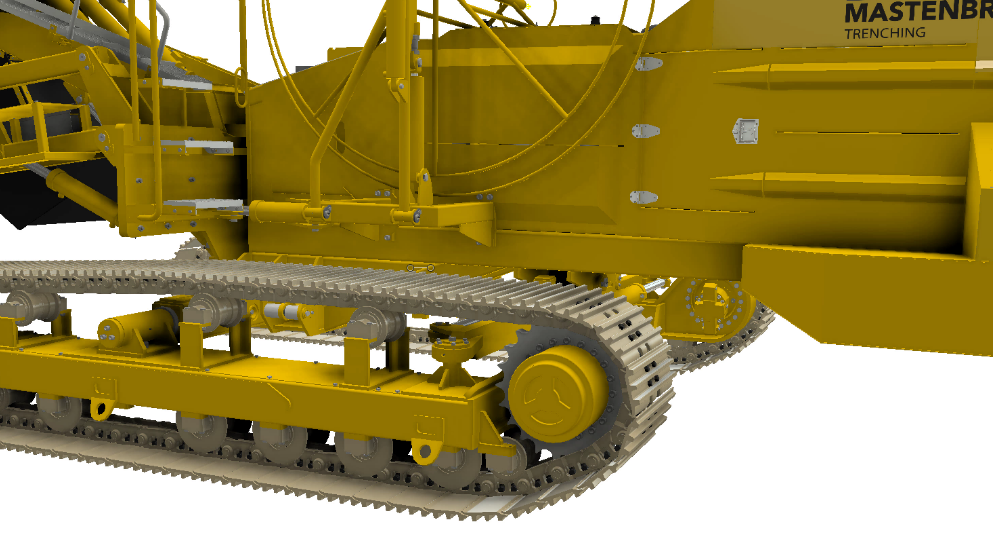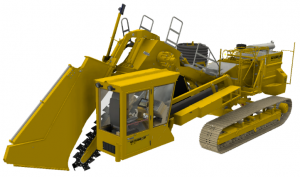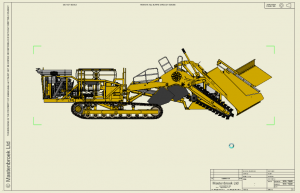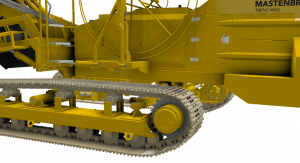
The Inventor product team is constantly capturing feedback from the user community about where they’d like to see investment in the product. Large assembly performance consistently ranks near the top of many customer wish lists. Users are building more information and detail into their models and they need their data to remain easily manageable as model size
s continue to increase.
A few releases back, Inventor’s Express Mode was introduced to speed up load times on large assemblies and it’s since been incrementally expanded and improved. About a year ago we polled our user community to get their input on the next performance areas that could have a big impact in their day-to-day work. We asked customers to rank several performance items in order of importance. Scoring the results across over 450 responses, 3D graphics performance on large assemblies emerged as the single most important area. Drawing update performance also proved to be an important area specifically within the drawings environment for many customers.

Inventor customers often design large, complex assemblies with tens of thousands of parts. The image above shows an example of a machine designed by Mastenbroek using Inventor.
IMPORTANCE RANKING OF PERFORMANCE
ITEMS BY INVENTOR CUSTOMERS
- Assembly graphics rotate/pan/zoom performance
- Assembly update performance
- Drawing update performance
- Assembly interaction/selection performance
- Drawing interaction/selection performance
- Drawing graphics pan/zoom performance
Moving beyond the survey, we dug in deeper with several customers to get an in-depth understanding of common attributes of their large assemblies and the things they were looking to do with them inside Inventor. We refreshed our large assembly performance test suite with real world data sets from several customers and designed tests to better match real world design tasks our customers are completing today. In the end, eight customer data sets were added to the test suite representing large assemblies with 10,000-40,000 parts. Automated tests were then routinely run on a series of Inventor 2018 prototypes as the development team experimented with different approaches for speeding up both assembly and drawing performance. In each test we measured the amount of wall clock time for completing key tasks such as creating drawing views, opening assemblies, etc.
So, you might ask, were we able to awaken the performance? Test results on these models point to some fairly significant improvements on very large datasets with tens of thousands of parts. The results below compare average times measured for tasks in Inventor 2017 and Inventor 2018 on common workstation hardware.
3D Workflows
- Assembly pan/zoom/rotate – 4x improvement
- Component selection in an assembly – 3x improvement
2D Workflows
- Drawing pan/zoom, move view – 4x improvement
- Component selection in a drawing – 2x improvement
- Drawing Open – 2x improvement
- Create Base View – 3x improvement
- Create Projected View – 4x improvement
- Create Section View – 4x improvement
- Drawing Update – 1.5x improvement
One area worth highlighting is the improvements in pan/zoom/rotate performance.
A lot of this comes from a technique we call Automatic Refinement. This capability allows Inventor to show large assemblies in much the same way a game engine works. Inventor only shows parts/assemblies that are visible based on what you are looking at as you navigate your assembly and does not spend resources rendering parts that are not necessary while you are interacting with the model. Within Applications Options, users can control the threshold at which Automatic Refinement begins to operate based on frame rate. If frame rates drop below a certain value, Automatic Refinement is invoked to help sustain graphics performance. It can be a huge help when navigating through highly complex assemblies with thousands of parts.

Aside from Automatic Refinement, several other workflow improvements like easier access to Express Mode and Defer Drawing Update have sped up common large assembly design tasks. Check out the Productivity and Performance Enhancements section of the Inventor 2018 online help for a review of these enhancements. For folks interested in the details of large assembly modeling practices and recommended hardware setups, you can also review a newly updated best practices guide that are now within the online help too.
Performance needs continue to expand over time and the product team will be continuing research in these areas as we go forward. We’d invite anyone particularly interested in performance to join the discussion in the Inventor Feedback Community. There you’ll be able to connect directly with the Inventor engineering team, see what’s being developed for upcoming releases, and help shape the future direction. In the meantime, we hope you’re able to take advantage of all the performance enhancements included in Inventor 2018.
Chris Hall – Product Manager, Inventor Product Line



Add comment
Connect with: Log in
There are no comments